How to Make Pita Bread
Pita bread is a staple in our home. I grew up outside Detroit, Michigan and pita bread was always available. I can not stand the really bready and flavorless pita bread sold at most grocery stores so I choose to make these at home. I make pita bread to go with mideastern meals, homemade lentil soup, hummus or tabbouleh. I also love it used simple as “pocket” bread, stuffed with whatever I have on hand, turkey & cheese, chicken salad, Caesar salad, Greek salad, falafel – anything goes. We love the flavor and texture of this flat bread and a batch of this bread does not last long in our house. The kids really enjoy watching the bread puff up in the oven and the pocket created during baking. Keep reading to learn how to make pita bread at home.
General information – How to Make Pita Bread
You can use any basic white dough to make pita bread. The most important step in this process is the baking. No matter what dough you are using, the pocket is created by taking about 1/2 inch thick rounds and placing them in a hot oven so they puff up, creating the signature pocket. The high heat also gives the bread a more complex, artisan flavor. You can easily vary the dough with whole wheat flour, or any combination of flours you prefer. If you add all or partial whole wheat flour you will need to add extra flour to the dough – whole wheat flour absorbs more water than white flour. Bake as described. When we lived in Phoenix, I chose to make this bread in an outdoor grill. I heated the grill to 500 F and was able to cook them on the grill on top of a wire rack. This is an excellent variation that keeps the kitchen from becoming overheated in the baking process.
Step 1 – How to Make Pita Bread – Ingredients
If I am going to make bread at home I choose to use the best ingredients available. In this case, I make the dough using only unbleached unbromated bread flour. I have found that bleached, bromated flour has a chemical aftertaste. Flour bleached and bromated is actually banned in Europe and several Asian countries because it has found to have traces of carcinogenic substances. Beyond that, the chemicals take over the flavor of the breads. So if you are going to bake at home, use high quality ingredients and the end result will be better than anything you could buy in a local bakery. As to the yeast, I use instant yeast as it is ideal for breads mixed in the food processor. If you do not have instant (or bread machine) yeast, you can replace the instant yeast with active dry yeast – just add 50% more. Here is a table
Step 2 – How to Make Pita Bread – Mix and Knead the Dough
I prefer to mix the pita bread dough in my food processor. This takes just a minute to mix and knead the dough. Of course you could adjust any of the measurements above and mix and knead the dough in a standing mix or even by hand. Follow the manufacturers instructions depending on which method you use to mix and knead bread dough.
If using the food processor, start by placing all the dry ingredients into the bowl of the food processor. Pulse to quickly mix. With the machine running add the water mixed with the olive oil to the mixer. Depending on the humidity of your climate you may need to add slightly more or less water. I live in a dry climate so I usually need about an extra half ounce of water in order to make the dough form a ball in the mixer. When the dough comes together start a timer for 45 seconds. Allow the dough to knead in the food processor for the full 45 seconds. When it is ready the dough will be smooth and elastic. If there are any dry sections you may need to add a bit more water and knead the dough for an additional 30 seconds. Place the dough in a sealed container coated in cooking spray. I use a damp cloth and a lid to keep the dough from drying out during the first rise. The dough should double in size.
If making the dough by hand or using a stand mixer start out by activating the yeast in warm water. Add the sugar and then the salt. Slowly add the flour, one cup at a time until the dough forms a ball. Knead about 7 minutes or according the manufacturers instructions. Continue as directing allowing the dough to double in size at room temperature.
Step 3 – How to Make Pita Bread – First Rise
As pictured above, place the dough in a plastic container coated in cooking spray so the dough does not stick to the container as it rises. The dough will double in size. Keep the container in a draft free location. This can take 1-1.5 hours depending on the temperature of the room. At this point preheat the oven to 500 degrees Fahrenheit. Place a baking stone at the bottom rack of the oven to help retain the high heat. Once the dough has doubled place the dough gently on a counter top dusted in flour. Cut the dough into 10 pieces (for the 500 gram recipe) or into 16 pieces (for the 750 gram recipe). This makes 6-7 inch pita bread. If you want larger pita bread cut the dough into larger pieces. Form the dough into circles and allow them to rest under a damp cloth for at least 20 minutes.
Step 4 – How to Make Pita Bread – Form the pitas
After the dough has rested roll into flat 6-7 inch circular shapes on a lightly floured surface. After the shape has been rolled cover and let it rest for at least 5 minutes. Making these pita shapes is much like making pizza dough. Don’t worry about perfection, just be sure not to roll the pita bread dough too thin.
Step 5 – How to Make Pita Bread – Baking the Pita Bread
The oven needs to be very hot, preheated to 500 degrees Fahrenheit before baking. I put a metal cooling wrap in the center of the oven just before baking the pita bread. I have found the best results baking the pita bread this way. Some recipes have you place the dough on a baking stone, but I had less success with the dough puffing up on a baking stone. Carefully place 2-4 dough rounds on the wire rack once the oven is hot. Reduce the temperature to 450 degress Fahrenheit as the pita bread bakes. Bake the pita bread for 6-7 minutes and watch as the dough puffs up in the oven. The pita bread is ready when the edges are golden brown. Do not overcook the pita bread or it will be too dry and tare when filling. Notice the lovely pocket that is formed during the baking process.
Immediately after baking cover the pita bread in a dry cloth. This allows the dough to soften. Once cool, store the pita bread in a plastic bag. The prepared pita bread freezes well in a plastic bag. Fill with your favorite ingredients. When making Greek or Mideastern foods warm the pita bread on a grill with melted butter or olive oil. Enjoy!
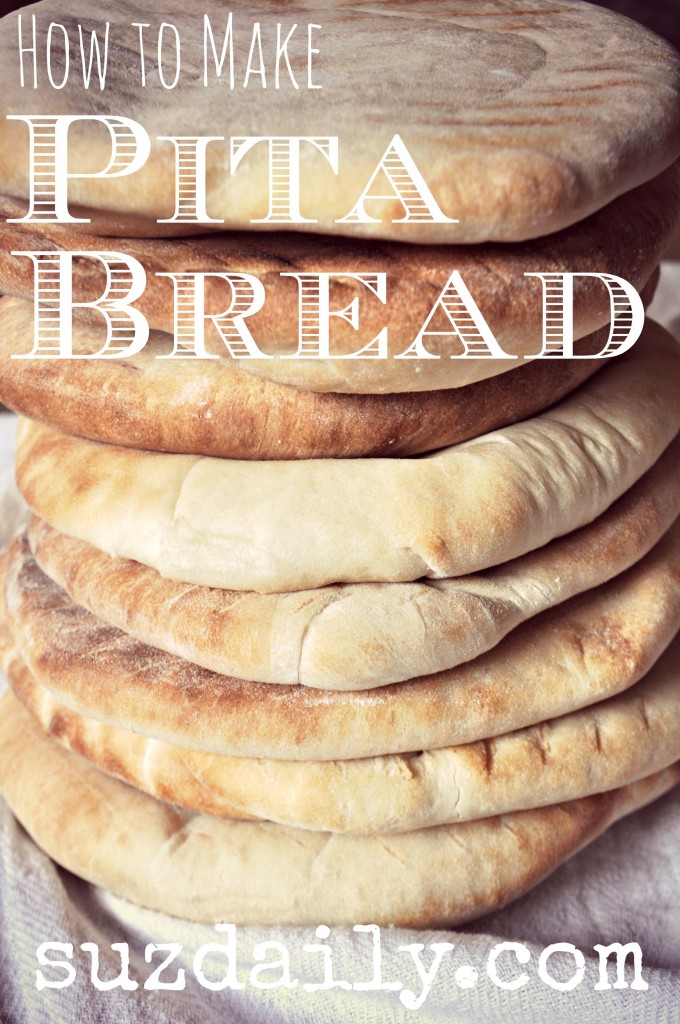
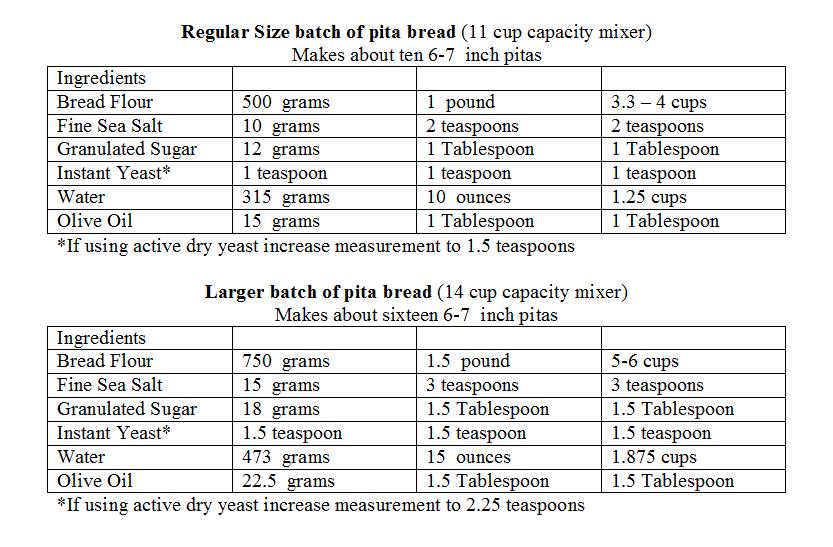
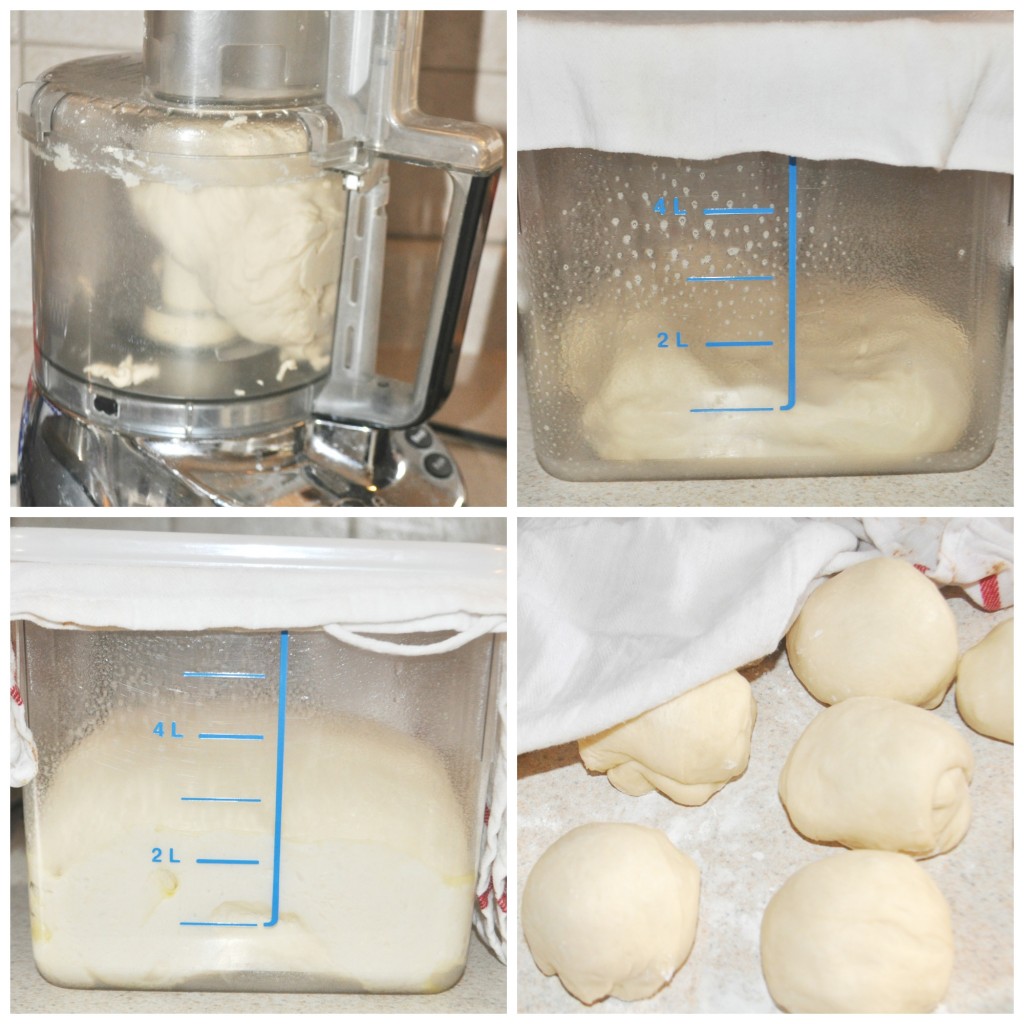
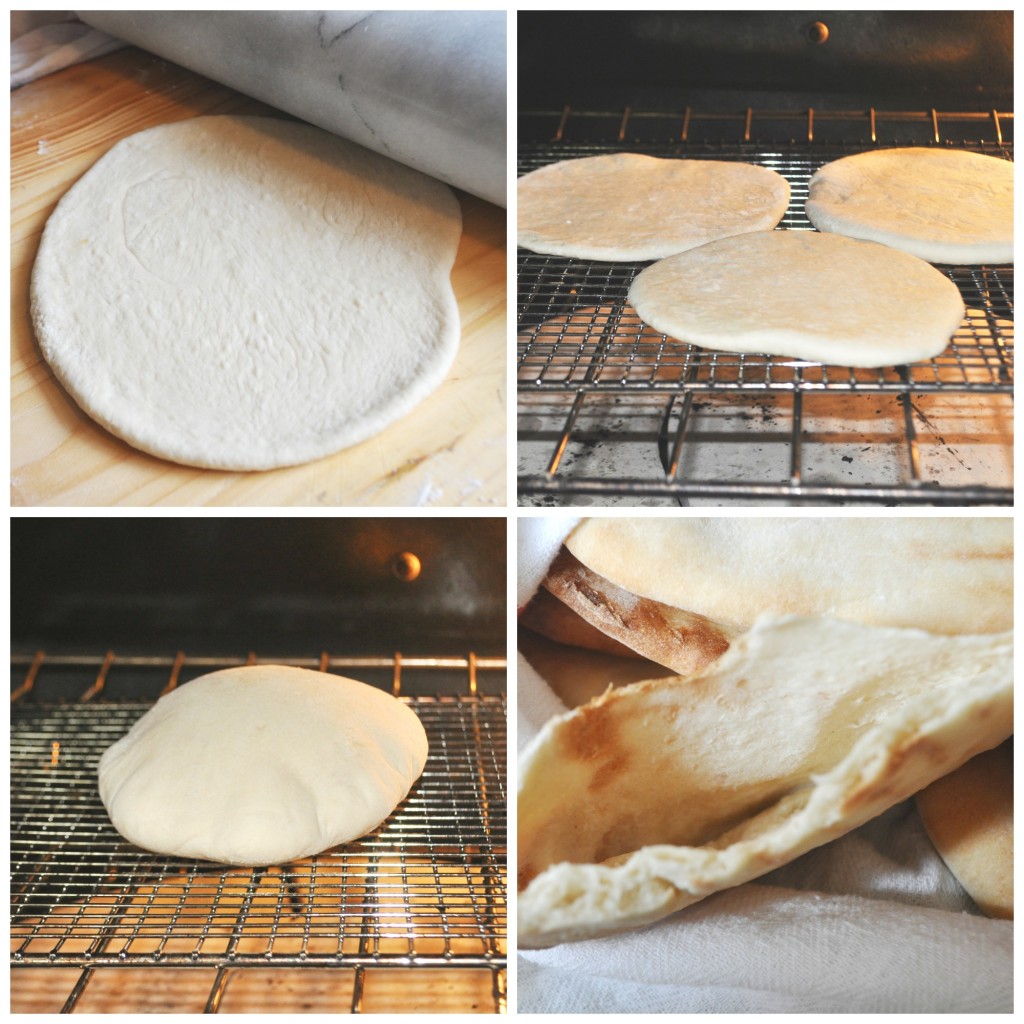
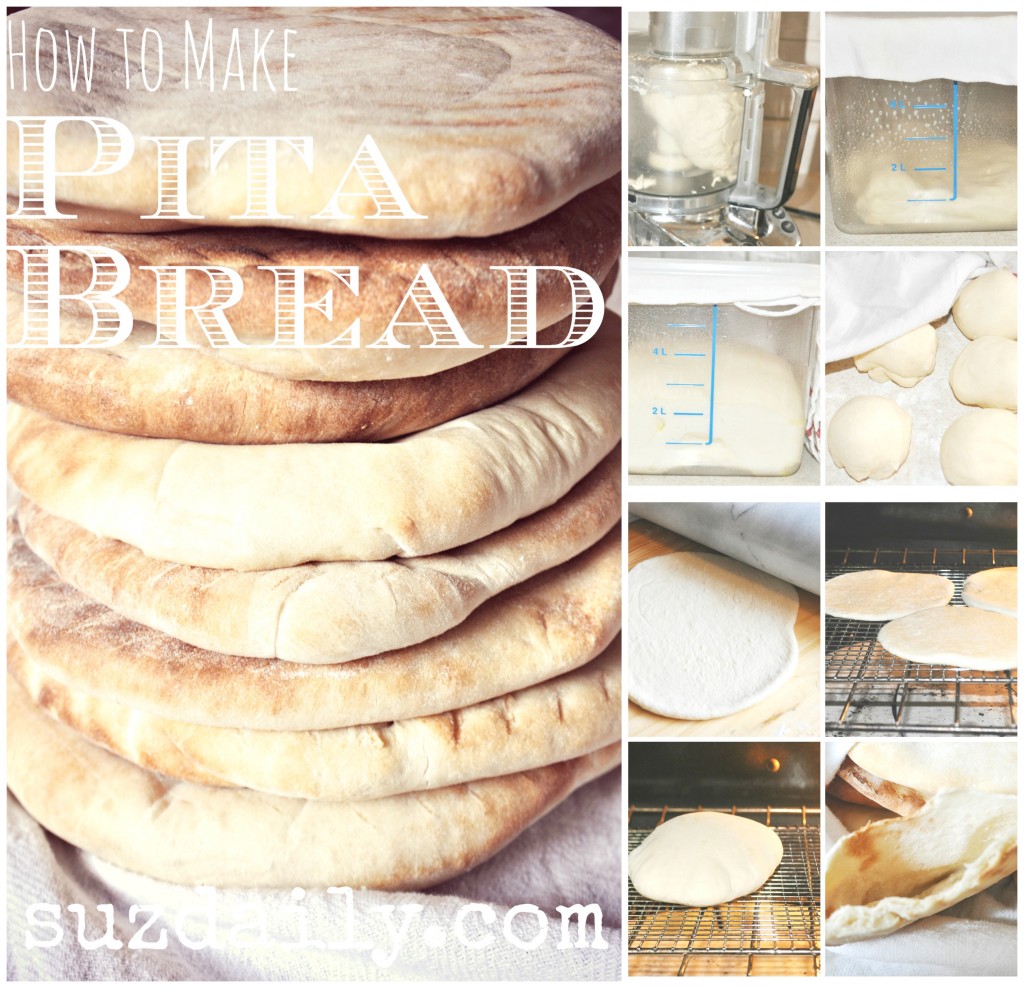



Love this recipe! Thanks for documenting it !!
Cathy – i know this is a favorite! We love making pita bread.
Suz 🙂
I am going to try these. They look great!
Anita – you can use whatever dough you prefer. Sometimes I change around the flours, add a bit of yogurt to the dough – whatever. What is important is baking them in a super hot oven. We love these. They do not last!
Thanks for looking!
Suzanne
I just found your blog via the amazing decorated cookies you made to honor the “people that inspire you.”
I grew up in the Detroit area and LOVE Mideastern food! I’m living in Texas now and am dying for good Lentil soup. Do you have a “tried and true” recipe that you can share or any other mid- eastern main dishes(lamb, chicken, kabobs,etc.) ? There are several Mideastern restaurants in Dallas, but they do not compare to those in the Detroit area! Thanks!!!
Karen-
I agree – the Mideastern food in Michigan is the best!
Here is the lentil soup we like; however, maybe what you are thinking of has more flavor. This one is seasoned with lemon, cilantro and cumin. At most Mideastern restaurants you may find more flavor. My family still loves this recipe!
https://www.suzdaily.com/2012/10/healthy-and-delicious-red-lentil-soup.html
If I post more recipes I will let you know. I have a couple of good cookbooks but haven’t had time to try out the recipes. There is one Mideastern restaurant in salt lake city – but it is over-priced and not as good as the food in Detroit.
What i would give for a trip to coney island!
Suzanne 🙂